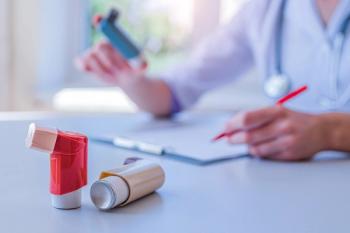Article highlights
- Extra after-school physical activity doesn't harm academic performance in elementary school children.
- Outdoor activities benefit children's physical well-being.
- The study involved over 2,000 children from rural and urban schools in China.
- After-school physical activity improved overall fitness in children.
- Myopia incidence reduction was observed but not statistically significant.
Adding 2 hours of extracurricular physical activity was found to be noninferior in academic performance and improved physical fitness compared to free use of time after school for elementary school children in China, according to a study published in JAMA Pediatrics.
The benefits of increased outdoor physical activities for children’s physical well-being and myopia onset are widely acknowledged. When countries have competitive educational systems, some parents could be reluctant to increase children’s extracurricular physical activity due to concerns of potentially compromising academic performance.
Study investigators sought to determine if additional extracurricular physical activity time after school compromised academic performance for elementary school children in grades 3 and 4. The cluster, randomized trial took place in Yudu, Jiangxi, China from October 2020 to June 2021 and featured 2032 children from 24 elementary schools (mean [SD] age, 9.22 years [0.62], 1040 girls [51.2%]). Children were placed in the intervention group (12 schools, 1012 children), which received 2 hours of after-school physical activity time outdoors on school days, or the control group (12 schools, 1020 children), which was free to choose after-school activities. At baseline and at the end of the study period (1 academic year), standardized mathematics tests and physical fitness assessments—2018 National Physical Fitness Survey Monitoring Programme in China—were performed. Myopia was defined as a cycloplegic spherical equivalent refraction of –0.5 diopters or less in either eye, according to the study authors.
Twelve rural and 12 urban elementary schools were included, with a mean class size of more than 30 children. One class in grades 3 and 4 were randomly selected, and children were aged between 7 and 11 years. The primary endpoint was “the between-group mean difference in mathematics test scores at the end of 1 academic year, with a noninferiority margin of –3.3 points.” Tests were scored by trained teachers, as original scores ranged from 0 to 100 points. Points were divided into 5 categories (A+ [≥95 to ≤100 points], A [≥85 to <95 points], B [≥75 to <85 points], C [≥60 to <75 points], and D [<60 points]). Overall physical fitness scores and myopia incidence after 1 academic year were secondary outcomes in the study. The overall physical fitness score was calculated as the sum of weighted individual scores. Age- and sex-stratified weights of body mass index (BMI) were at 15%, lung vital capacity was 15%, a 50-m spring was 20%, a sit-and-reach test was 20%, 1-minute sit-up at 10%, and a 1-minute jump rope test was 20%. Higher scores indicated better fitness.
Of the total 2032 children, 1903 completed follow up, as 129 were lost because of transfer or leave of absence, respectively. In all, 4548 extracurricular physical activity sessions were performed. Among the intervention and control groups, mathematics scores (mean difference, –0.59 [95% CI, –5.13-3.95]), overall physical fitness scores (mean difference, 0.73 [95% CI, –.086-2.33]), and myopia prevalence (mean difference, –0.57 [95% CI, –19.64-18.49]) were similar at baseline. In the intervention group, the SD mathematics score was 78.01 (17.59) points at the end of 1 academic year and 77.70 (17.29) points in the control group, with an adjusted between-group mean difference of 0.65 points (95% CI, –2.85-4.15). According to the results, the mean difference was greater than margin of –3.3 points, which indicated noninferiority.
At the end of 1 academic year, the SD overall physical fitness score was 81.49 (6.26) points in the intervention group, compared to 76.24 (7.29) points in the control group, with an adjusted mean difference of 4.95 points (95% CI, 3.56-6.34 [P < .001]). In the intervention group, the improvement in physical fitness score during the follow-up was 4.67 points higher than in the control group (95% CI, 3.17-6.18). In the intervention group, 58 of 702 children (8.3%) had less incident myopia compared to children in the control group (74 of 728 children [10.2%]), though the adjusted mean difference did not reach statistical significance (−1.90%; 95% CI, −18.72% to 14.91%; P > .99).
Results of this cluster, randomized trial demonstrated 2 additional hours of extracurricular physical activity per day in an after-school setting were noninferior in relation to academic performance, compared to the current practice of free play after school. Further, the study demonstrated beneficial effects on the fitness of the schoolchildren included.
Reference:
Wang D, Xiong R, Zhang J, et al. Effect of extracurricular after-school physical activities on academic performance of schoolchildren: A cluster randomized clinical trial. JAMA Pediatr. Published online September 18, 2023. doi:10.1001/jamapediatrics.2023.3615








